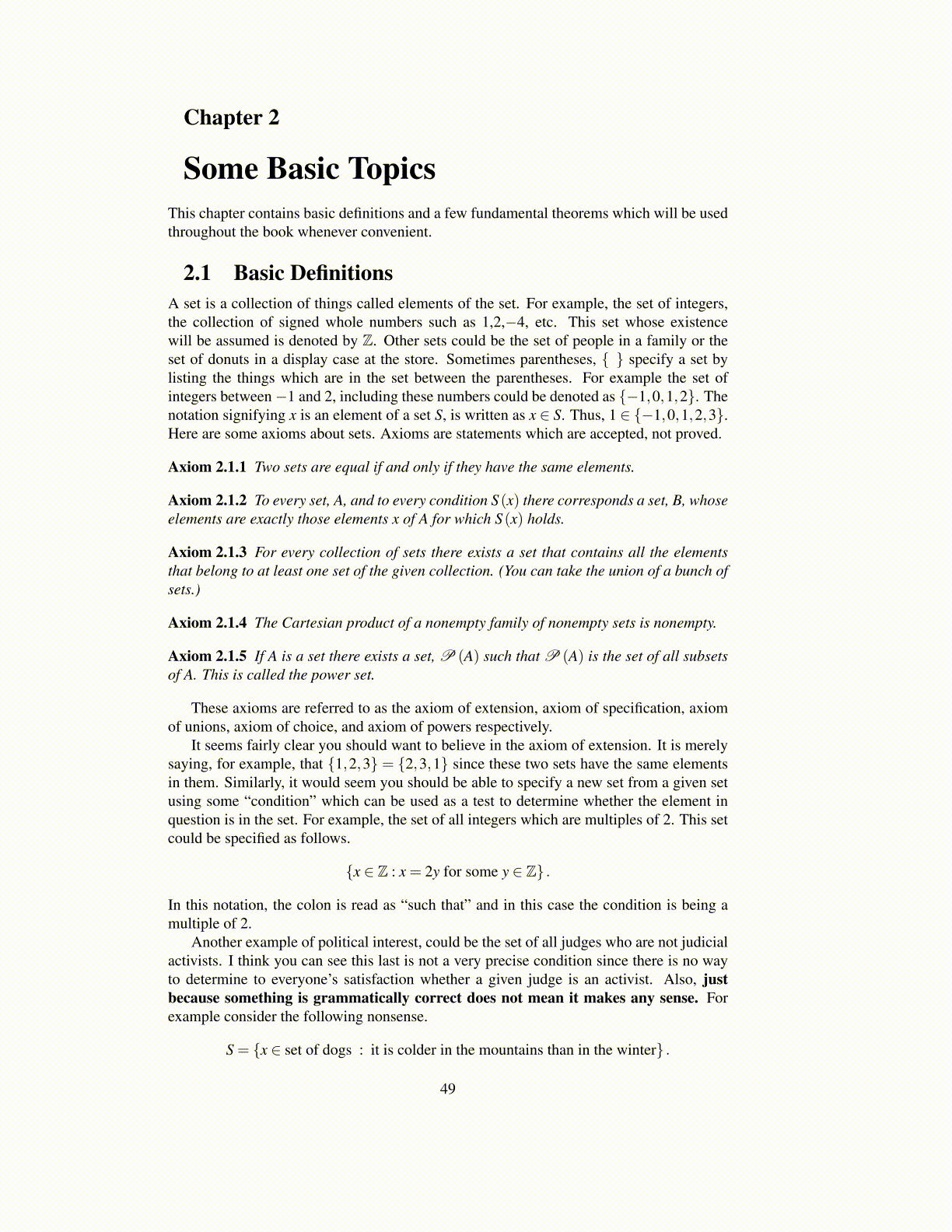
Chapter 2
Some Basic TopicsThis chapter contains basic definitions and a few fundamental theorems which will be usedthroughout the book whenever convenient.
2.1 Basic DefinitionsA set is a collection of things called elements of the set. For example, the set of integers,the collection of signed whole numbers such as 1,2,−4, etc. This set whose existencewill be assumed is denoted by Z. Other sets could be the set of people in a family or theset of donuts in a display case at the store. Sometimes parentheses, { } specify a set bylisting the things which are in the set between the parentheses. For example the set ofintegers between−1 and 2, including these numbers could be denoted as {−1,0,1,2}. Thenotation signifying x is an element of a set S, is written as x ∈ S. Thus, 1 ∈ {−1,0,1,2,3}.Here are some axioms about sets. Axioms are statements which are accepted, not proved.
Axiom 2.1.1 Two sets are equal if and only if they have the same elements.
Axiom 2.1.2 To every set, A, and to every condition S (x) there corresponds a set, B, whoseelements are exactly those elements x of A for which S (x) holds.
Axiom 2.1.3 For every collection of sets there exists a set that contains all the elementsthat belong to at least one set of the given collection. (You can take the union of a bunch ofsets.)
Axiom 2.1.4 The Cartesian product of a nonempty family of nonempty sets is nonempty.
Axiom 2.1.5 If A is a set there exists a set, P (A) such that P (A) is the set of all subsetsof A. This is called the power set.
These axioms are referred to as the axiom of extension, axiom of specification, axiomof unions, axiom of choice, and axiom of powers respectively.
It seems fairly clear you should want to believe in the axiom of extension. It is merelysaying, for example, that {1,2,3} = {2,3,1} since these two sets have the same elementsin them. Similarly, it would seem you should be able to specify a new set from a given setusing some “condition” which can be used as a test to determine whether the element inquestion is in the set. For example, the set of all integers which are multiples of 2. This setcould be specified as follows.
{x ∈ Z : x = 2y for some y ∈ Z} .
In this notation, the colon is read as “such that” and in this case the condition is being amultiple of 2.
Another example of political interest, could be the set of all judges who are not judicialactivists. I think you can see this last is not a very precise condition since there is no wayto determine to everyone’s satisfaction whether a given judge is an activist. Also, justbecause something is grammatically correct does not mean it makes any sense. Forexample consider the following nonsense.
S = {x ∈ set of dogs : it is colder in the mountains than in the winter} .
49